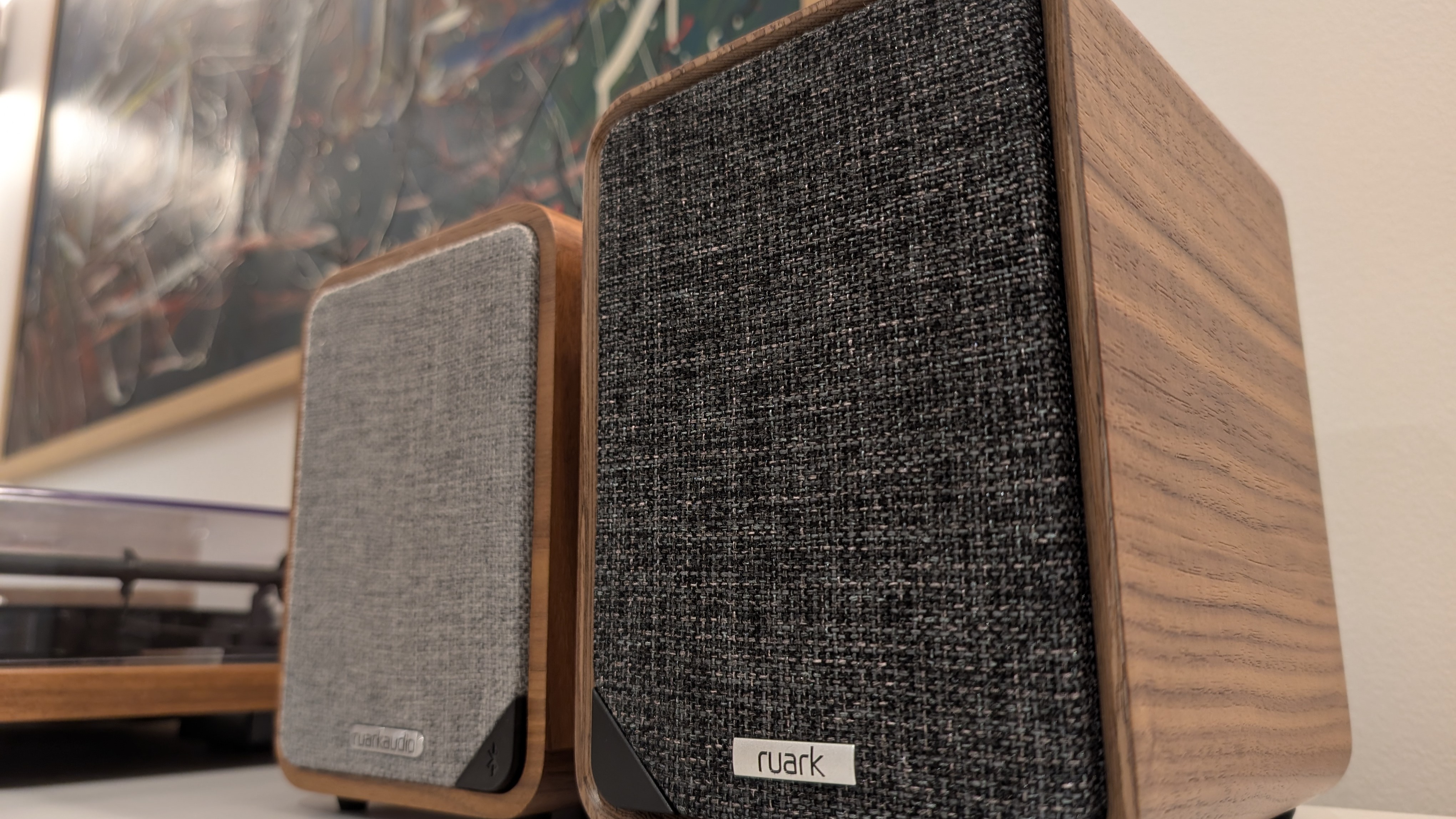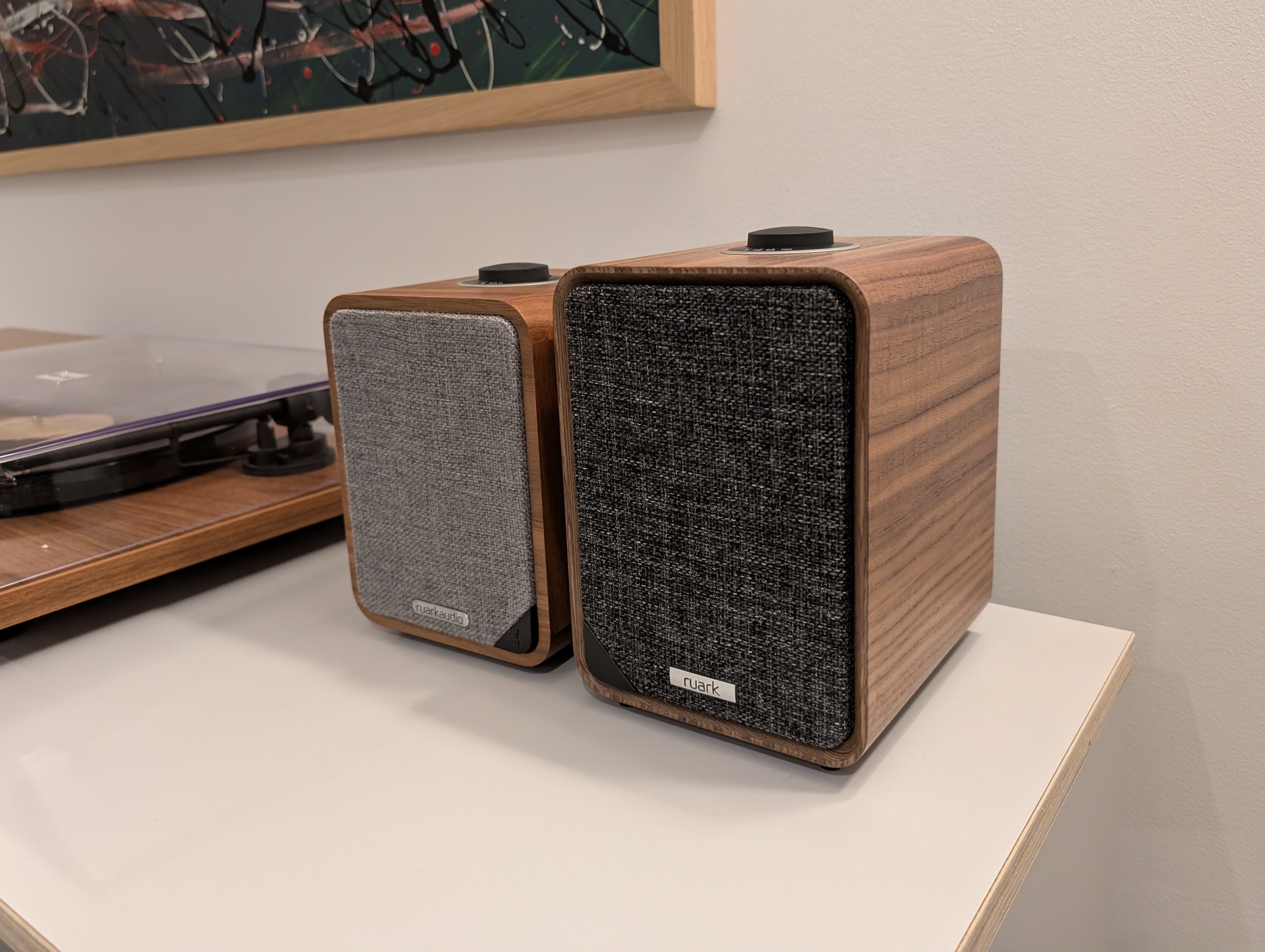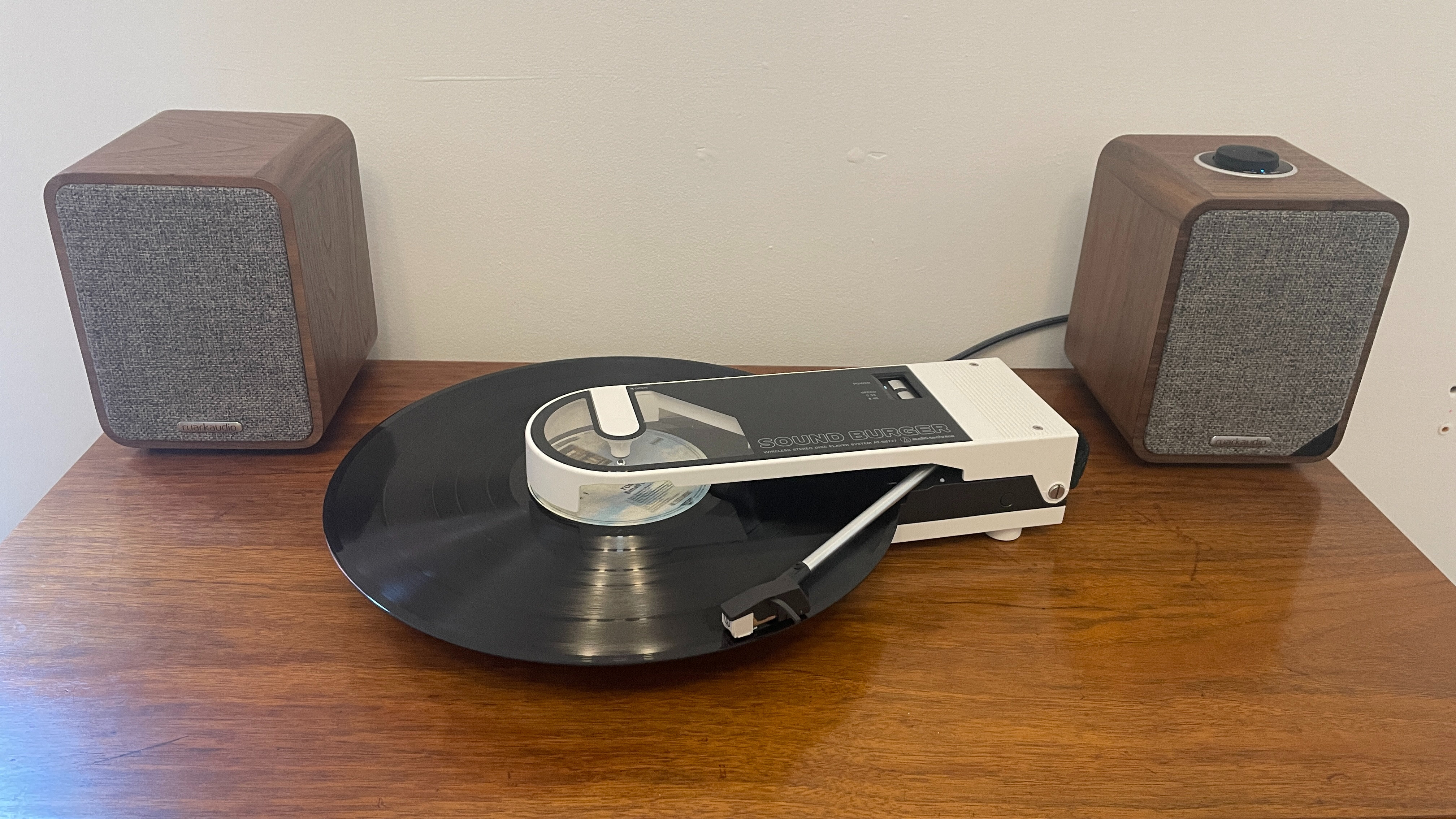I'm super excited about Ruark's dinky new desktop speakers – but not for the reason you think
The world needs more small, great-sounding hi-fi products

The world of hi-fi is a big, wild, ever-changing place full of a multitude of different products – especially if you look at the top end of the market.
Peruse our Temptations reviews, or look at our 11 most exciting products at High End Munich 2025 list and you’ll find a wealth of eye-catching and atypical designs, eye-watering price tags and, at times, outright bonkers specifications sheets.
Which is why you may be surprised to hear that after helping cover the high-end hi-fi show mere weeks ago, for me personally it’s not a premium amplifier or a giant set of floorstanders that measure in at two Kashes high*, that has caught my eye recently – it’s a £399 / $579 set of dinky desktop speakers.
*Editor’s note: internally we measure speaker height based on their comparative size to our hi-fi and audio editor, Kashfia Kabir. One Kash is roughly 157cm.
Specifically, I’ve got my eye on the new Ruark Audio MR1 MK3 – a pair of powered desktop speakers that our senior staff writer, Harry McKerrell, got an exclusive early listen with back in April, ahead of their official launch this week.
There are two reasons for my excitement.
The first and biggest reason is a very personal one. These Ruarks could plug a gap in my home audio set-up that’s currently in dire need of an upgrade, namely my work-from-home desk.
The latest hi-fi, home cinema and tech news, reviews, buying advice and deals, direct to your inbox.
If you work from your home office a lot and love music, then chances are that the majority of your listening time is spent at your desk. That’s certainly the case for me.
Which is why I want a pair of good-sounding, stereo speakers that I can connect to my PC that are small enough to be sensibly placed on my desk in a way that positions my office chair directly in the sweet spot.
You’d think it would be simple to find a pair that meets these criteria, but after years of searching, I can safely confirm that, unless you’re willing to spend lots of money, it is not.
The only speakers that have come close to what I need are the KEF LSX II and KEF LSX II LT streaming speaker systems. But, while these are both small, sound excellent and look lovely, they are also a little beyond my budget.
The LSX II cost £1199 / $1400 and the LSX II LT £899 / $999. For some that will sound reasonable considering what you get from the speakers (amplification, hi-res streaming support, KEF's speaker technology), but they are a little too expensive for me to justify, considering their intended place on my desk rather than on dedicated hi-fi- stands – an AV hack’s monthly stipend stretches only so far.
The Ruark MR1 MK3’s £399 / $579 price makes them a much more realistic option for people like me on a tight budget.
Moreover, their footprint is smaller than the KEFs, making them easier to accommodate on my desk, and my colleague who has lived with the MR1 speakers for many years confirms they deliver a more robust and musical performance than you might expect from such a compact size.


Second, this third generation model comes from a line of dinky desktop speakers with serious pedigree. Both the Ruark Audio MR1 and MR1 MK2 not only earned five-star ratings when we tested them, but they are also repeat What Hi-Fi? Award winners.
Since their launch, the MR1 MK1 picked up Award wins in 2013 and 2014, before being briefly dethroned by the KEF Egg in 2015 for two years.
But come 2017, the MR1 MK2 appeared and quickly took back Ruark’s lead. The newer model went on to enjoy back-to-back (to back) trophies for the best desktop speaker until 2023.
There aren’t many speakers in the annals of What Hi-Fi? history to match the MR1s’ impressive streak, let alone compact powered speakers with Bluetooth.
But, on top of their legacy, based on Harry’s first impressions, the MR1 MK3 look very impressive in their own right, too.
At a technical level, despite sharing a similar, wonderfully retro-chic wood design to their predecessors, the MR1 MK3 have had some key hardware upgrades.
One of the biggest is the use of a new 8.5cm long-throw natural fibre mid/bass driver which, according to Ruark, offers listeners a deeper, more controlled bass and a clear, detailed midrange than their predecessors.
The MR1 MK3 offer Bluetooth as before, but now also include a USB-C wired audio input for plugging my work laptop directly into the speakers for higher-quality listening.
On top of that, after Harry’s positive experience at his demo, I’m taking the sound claims very seriously. As he reported:
“Our demo time with the MR1 MK3 has left us excited, and the promise of its new features and updated performance is one we have been waiting years for.”
Which is why I can’t help but feel my pulse rise a few beats whenever I think about getting them into our listening rooms.
Here’s hoping they deliver the goods when we put them through the full What Hi-Fi? review treatment.
MORE:
These are the best bookshelf speakers we have reviewed
We rate the best speakers money can buy
Our pick of the best DAB radios

Alastair is What Hi-Fi?’s editor in chief. He has well over a decade’s experience as a journalist working in both B2C and B2B press. During this time he’s covered everything from the launch of the first Amazon Echo to government cyber security policy. Prior to joining What Hi-Fi? he served as Trusted Reviews’ editor-in-chief. Outside of tech, he has a Masters from King’s College London in Ethics and the Philosophy of Religion, is an enthusiastic, but untalented, guitar player and runs a webcomic in his spare time.
You must confirm your public display name before commenting
Please logout and then login again, you will then be prompted to enter your display name.
